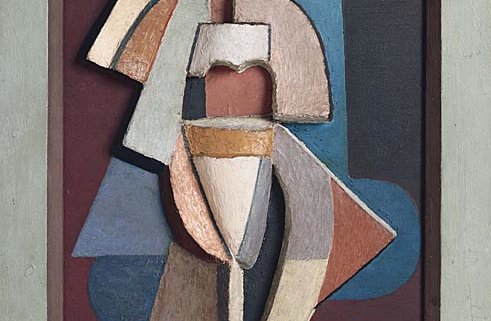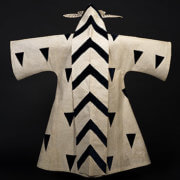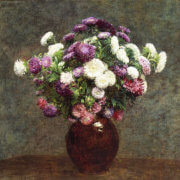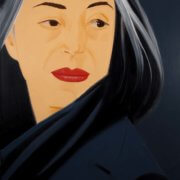“Stupefying and Vulgar!” 100 years after the Armory Show

1913 Armory Poster
The Phillips Collection in Washington, DC, has a knack for mounting shows that pull together beautiful art, thoughtful curator-ship, and illuminating ephemera. “History in the Making: 100 Years after the Armory Show” is no exception.
At the core of this exhibition is evolution: specifically, how the collection’s founder, Duncan Phillips, grew from—dare we say it?—a callow youth with a limited imagination into the visionary whose eye and intellect created this enduring modern art museum. In 1913 at age 26, Phillips, along with thousands of others, viewed the explosive show of avant-garde art in the 69th Regiment Armory in New York City. Appalled, especially by the Cubists, he later wrote a scathing paper trouncing the show: “… the air of studios in New York is charged with much talk about painting, talk that is full of fanaticism and mystification and real concern for the future of art … an International Exhibition of Modern Art quite stupefying in its vulgarity.”

“The Blue Room,” 1901, by Pablo PIcasso
The Phillips show presents examples of Armory painters its founder had scorned and then collected avidly. Accompanying the show is an informative cell phone gallery tour.
“That they are doing something new cannot be denied,” Phillips said of the Armory artists, “although just what it is that they are doing, no one has yet perceived.” Picasso was just as puzzling to Phillips as the rest of the Cubists, but by 1927 he acquired “The Blue Room,” 1901, a safe choice for a first Picasso. Moody and intimate, it’s easy on the eye and not nearly as challenging as “Standing Female Nude, which was shown at the Armory.

“Standing Female Nude,” by Pablo Picassoeasy on the eye and not nearly as challenging as “Standing Female Nude,” which was shown at the Armory.
The French artist, Odilon Redon, showed his painting,

“Mystery,” by Odilon Redon, 1910
“Silence” in the Armory show. Phillips acquired “Mystery,” 1910, seen here, in 1925. The sad-eyed woman seems to rise out of the swirl of flowers, or to be hiding behind it, as if she has no connection to the blooms.
“Sketch for Painting with White Border,” 1913, by the Russian painter Wasily Kandinsky, was acquired by Phillips in 1953. Hung near the Redon, the painting vibrates with jewel-like colors, and takes the eye for another circular journey. Kandinsky’s “Improvisation 22,” shown at the Armory, came in for the same ridicule as the Cubists, but canny Alfred Stieglitz, the photographer and modern art promoter, snapped it up for a reduced price of $500.

“Sketch for Painting with White Border,” 1913, by Wasily Kandinsky

“Flowers-Bouquet (Tulip Bulbs)”, 1920-3, by Walt Kuhn
The Armory featured several American painters including Walt Kuhn. Here we see “Flowers-Bouquet (Tulip Buds),” 1920-23—almost an abstract, but not quite. Kuhn was among the founders of the Association of American Painters and Sculptors, the group that mounted the Armory show, and in 1912 traveled abroad to find paintings to include in the exhibition.

“Standing Woman,” 1920, by Alexander Archipenko
Nearby hangs Alexander Archipenko’s “Standing Woman,” 1920, acquired in 1953. Crafted from oil and gesso on papier-mâché, this piece calls to mind the work of my father, James W. (Red) Boyers, who developed his own bas-relief technique. Red wasn’t a Cubist, however, as his piece “Transmigration,” 1969,

“Transmigration,” 1969, by James W. (Red) Boyers
shows. He took inspiration from natural forms, Native American imagery, and his own vocabulary of shapes.
Another American, Allen Tucker, known as “the American Van Gogh” in the early 20th century, put together the catalogue for the Armory Show where he exhibited five of his own paintings. He’s represented

“The Red Barns,” 1923, by Allen Tucker
here by “The Red Barns,” 1923, which Phillips acquired in 1926. Our cell phone curator tells us that Tucker and Phillips met shortly after the Armory show and Phillips praised Tucker’s “vibrant” landscapes.
At the time of the Armory show, Phillips had called the actual Van Gogh “an unbalanced fanatic.” But in 1926, around the same time he bought the Tucker, he decided to buy his first van Gogh, one of five in the Collection. (Incidentally, the Phillips plans an exciting fall show which will examine Van Gogh’s repeated treatment of the same or similar images. Opening October 12, 2013, the show will bring together 13 of van Gogh’s “repetitions,” in some cases reunited for the first time in many years.)

“Resurrection,” 1885, by Albert Pinkham Ryder
Finding Albert Pinkham Ryder’s “Resurrection,” 1885, among the jarring canvasses at the Armory must have felt to Phillips like he had run into an old friend. Considered an “old master,” Ryder, with his highly abstracted brooding scenes, clearly shows the roots of modernism in 19th century romanticism. Ryder’s “Moonlit Cove,” also owned by the Phillips Collection, was shown at the Armory and will be included in the New York Historical Society’s fall show, “The Armory Show at 100.”

“Two in a Boat,” 1891, by Theodore Robinson
American Impressionist Theodore Robinson was, like Tucker, new to me. His “Two in a Boat,” 1891, was hung in an Armory gallery devoted to important French, English, American, and Dutch painters, including John Henry Twachtman, Pierre Puvis de Chavannes, Gustave Courbet, Jean-Baptiste-Camille Corot, and others. Phillips viewed him as a “painter’s painter” and acquired this charming watercolor in 1920. A close friend of Monet, Robinson’s gestural brush strokes were influenced by European techniques, but his “careful rendering” of the figures here belies the 19th century realism of Winslow Homer and Thomas Eakins.

“Mont Sainte-Victoire,” 1886-7, by Paul Cezanne
Phillips first encountered Paul Cezanne at the Paris Salon Triennial in 1912. The exhibitors, including Cezanne, were “no more than a bunch of damn fools.” But by 1925, Cezanne was a “towering genius” in Phillips’ estimation. He bought “Mont Sainte-Victoire,” 1886-7, a softly rendered version of the mountain range near Cezanne’s home in the south of France.
The smaller room holds some of the most fascinating items in this show: a glass case full of Phillips’ original type-written monographs, journals, and letters, and the walls are hung with prints and small paintings.

“Purple Mountains,” 1924, by Arthur B. Davies
Among them, Arthur B. Davies’ sweet pastel landscape, “Purple Mountains” was made to accompany a 1924 monograph on the artist’s work by Duncan Phillips. Arthur Davies was president of the association that mounted the Armory show where he was represented by six works. Over the years, Phillips was to acquire 30 of Davies’ evocative landscapes. Phillips admired Davies’ “adventurous and anti-academic spirit,” our curator tells us, but mistrusted his foray into Cubism. This brings us to the most charming artifact in the show: Phillips’ journal in which he recounts how Arthur Davies “took his education in hand.” Placing a piece of glass over one of his realistic paintings, Davies “marked in chalk the contour of the masses,” then pulled away the glass with its “skeleton” tracings. Phillips saw that a “…Cubist picture is like a world rising out of chaos.”
Well worth lingering over, “History in the Making: 100 years after the Armory Show” will be on view at the Phillips Collection through January 5, 2014. http://www.phillipscollection.org/exhibitions/2013-08-01-exhibition-armory-show.aspx







Leave a Reply
Want to join the discussion?Feel free to contribute!